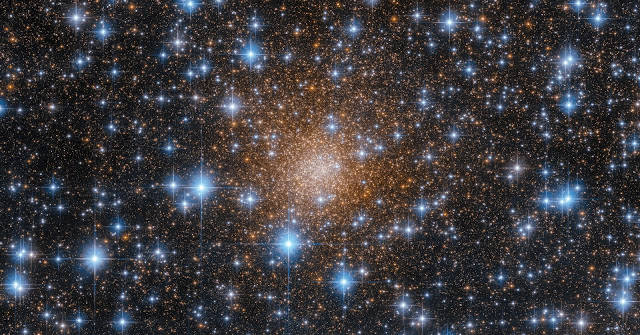Elliptical Galaxy NGC 541 Fuels an Irregular Galaxy | Hubble
This striking pair is an elliptical galaxy NGC 541 and an unusual star-forming, irregular dwarf galaxy known as Minkowski’s Object (the bluish object to the lower left of NGC 541). Elliptical galaxies are nearly spherical to egg-shaped groups of stars that form when galaxies merge. NGC 541 shoots out radio jets that are invisible to human eyes but detectable by radio telescopes. These jets originate in the accretion disk around the galaxy’s central black hole.
The radio jet from NGC 541 likely caused the star-formation in Minkowski’s Object. Radio galaxies like NGC 541 are surrounded by gaseous halos and/or debris from recent merger events—which may have triggered the radio galaxy activity in the first place. The jet plows into the moderately dense, warm gas around the galaxy and the shock compresses and heats the gas, causing it to become energized, or ionized. As the ionized gas reverts from its higher-energy state to a lower-energy state, energy leaves the cloud in the form of radiation. As the clouds cool, they collapse, giving rise to starbirth. Minkowski’s Object is about 7.5 million years old and consists of about 20 million stars.
Hubble observed Minkowski’s Object and NGC 541 to get a better sense of how star formation occurs in this region, what kind of star formation takes place, and the properties of the jet that triggers it.
Image Credit: NASA, ESA, and S. Croft (Eureka Scientific Inc.); Image Processing: Gladys Kober (NASA Goddard/Catholic University of America)
Release Date: May 23, 2022

Exp67.jpg)


.jpg)
V1.jpg)
V2.jpg)
V3.jpg)
V4.jpg)
V5.jpg)
V6.jpg)
Exp67-V1.jpg)
Exp67-V2.jpg)
Exp67-V3.jpg)
Exp67-V4.jpg)